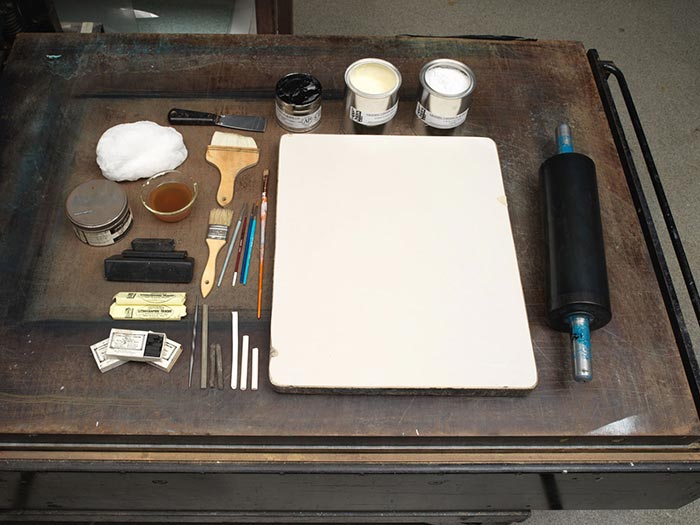Profit and Loss
Publisher Currier & Ives American
Not on view
The late nineteenth-century Darktown prints by Currier & Ives depict racist stereotypes that are offensive and disturbing. The Metropolitan Museum of Art preserves such works to shed light on their historical context and to enable the study and evaluation of racism.
This two-panel print features an elderly Black (African American) eel fisherman. In the left panel (captioned "Golly! What Luck!"), the man, standing on the shore amidst tall cattail plants with his back to the viewer, unhooks an eel from his fishing pole. He wears a straw hat on his bald head rimmed with white hair, a red vest over his white shirt (with his sleeves rolled up), blue and white striped overalls with a red patches on his rear end and left knee, and dark boots. He is unaware that two eels are escaping from a hole in his creel (lower left). In the right panel (captioned "Whar's Dem Eels?"), the open-mouthed, shocked man faces the viewer as he stands in the water holding his empty creel in his right hand.
Nathaniel Currier, whose successful New York-based lithography firm began in 1835, produced thousands of prints in various sizes that together create a vivid panorama of mid-to-late nineteenth century American life and its history. People eagerly acquired such lithographs featuring picturesque scenery, rural and city views, ships, railroads, portraits, hunting and fishing scenes, domestic life and numerous other subjects, as an inexpensive way to decorate their homes or business establishments. As the firm expanded, Nathaniel included his younger brother Charles in the business. In 1857, James Merritt Ives (the firm's accountant since 1852 and Charles's brother-in-law) was made a business partner; subsequently renamed Currier & Ives, the firm continued until 1907.

